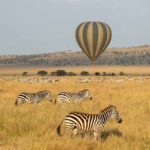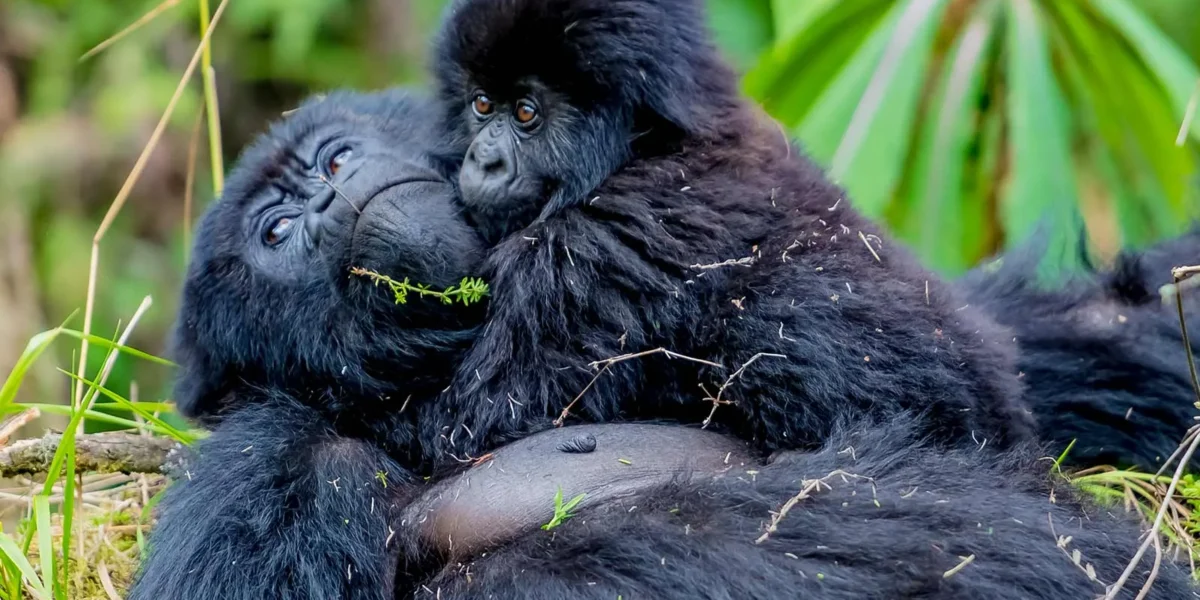What to Wear for a Gorilla Trekking Safari in Uganda
November 11, 2025
The Best Time of Year to Visit Serengeti National Park
November 19, 2025The Most Frequently Asked Questions About Gorilla Trekking (Answered)
Gorilla trekking is one of the most sought-after wildlife experiences in the world an opportunity to stand face-to-face with endangered mountain gorillas in their natural habitat. Whether in Uganda’s Bwindi Impenetrable National Park, Rwanda’s Volcanoes National Park, or the Virunga Mountains of the DRC, the experience is immersive, emotional, and unforgettable.
If you’re planning a gorilla trekking safari, you likely have a lot of questions. Below is a complete guide to the most common inquiries travelers ask before booking this life-changing adventure.
1. What Exactly Is Gorilla Trekking?
Gorilla trekking involves hiking through dense, mountainous forests to locate and spend time with a habituated (human-accustomed) family of mountain gorillas. Rangers and guides lead small groups usually limited to eight visitors to minimize disturbance to the gorillas and help protect this critically endangered species.
2. Where Is the Best Place to Go Gorilla Trekking?
The three main destinations are:
- Uganda – Bwindi Impenetrable National Park and Mgahinga National Park
- Rwanda – Volcanoes National Park
- Democratic Republic of Congo (DRC) – Virunga National Park
Uganda offers the most trekking permits and is known for rugged, adventurous treks, while Rwanda offers easier access and shorter travel times, though at a higher cost.
3. How Much Do Gorilla Trekking Permits Cost?
Permit prices vary by country:
- Uganda: Usually less costly than Rwanda, with hundreds of permits available daily.
- Rwanda: Generally the most expensive option but known for smooth logistics and luxury experiences.
- DRC: The most budget-friendly, but conditions can vary depending on safety and accessibility.
These fees directly support conservation and local communities.
4. How Difficult Is the Trek?
Trek difficulty ranges from moderate to strenuous. Hikes can last anywhere from 1 to 6 hours depending on where the gorilla family is located that day.
Factors that affect difficulty include:
- Terrain (steep, muddy, forested)
- Weather conditions
- Your personal fitness level
Porters are available in all destinations and can greatly enhance your comfort and safety.
5. How Much Time Do You Get With the Gorillas?
Once the gorilla family is located, visitors are allowed one hour in their presence. This time is strictly regulated to reduce stress on the animals.
6. What Should You Wear for Gorilla Trekking?
Essential trekking gear includes:
- Long-sleeved shirt and long pants
- Waterproof hiking boots
- Lightweight rain jacket
- Gardening or trekking gloves
- A small backpack
- Plenty of water and snacks
- Insect repellent
Dressing in layers is recommended because weather can change rapidly.
7. Are Gorilla Treks Safe?
Yes when conducted by licensed operators. Mountain gorillas are generally gentle and used to ranger presence. Professional guides ensure safety by providing clear instructions, like maintaining distance and keeping your voice low.
8. What Is the Best Time of Year to Go Gorilla Trekking?
Gorilla trekking is possible year-round, but the dry seasons offer easier hiking conditions:
- June to September
- December to February
During the rainy seasons, trails are muddier but the forests are quieter, greener, and often more photogenic.
9. How Close Can You Get to the Gorillas?
Regulations typically require visitors to stay 7 meters (about 23 feet) from the gorillas. However, gorillas sometimes approach on their own, and guides will instruct you on how to behave in such situations.
10. Can Children Go Gorilla Trekking?
Most gorilla parks require visitors to be at least 15 years old because of the strenuous hiking and the need for mature behavior around wildlife.
11. How Do I Book a Gorilla Trekking Safari?
Travelers can book permits independently, but most choose to go through a reputable tour operator that handles logistics, transportation, lodging, and guiding.
Companies like Terenga Safaris specialize in organizing gorilla trekking safaris, ensuring you get the right permits, the best accommodations, and experienced guides. Using a professional operator helps make the experience smooth, safe, and well-coordinated.
12. Why Is Gorilla Trekking Considered Expensive?
The high cost supports:
- Gorilla conservation and anti-poaching patrols
- Employment for local communities
- Habitat protection
- Veterinary care
- Park infrastructure
In essence, the price you pay helps ensure that mountain gorillas continue to survive and thrive.
Gorilla trekking is more than a wildlife encounter it’s a profound, immersive experience that connects you with one of the planet’s most extraordinary species. Whether you’re drawn by adventure, photography, or conservation, a trek into the gorilla highlands is something you’ll never forget.
If you’re considering a trek, Terenga Safaris and other experienced operators can guide you through the entire process, from securing permits to navigating the forest trails safely.



